($42): Although lovely herbal notes appear in this Pinot Noir, the focus is firmly footed on fruitiness. Suave mild tannins support the juicy red fruit nuances. The finish has a touch of sweetness, which makes the wine useful as a stand-alone glass before a meal.… Read more
Category Archives: Reviews
La Crema, Arroyo Seco (Monterey, California) Pinot Noir Panorama Vineyard 2014
($40): 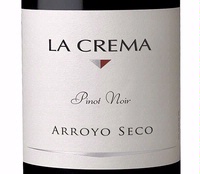 Another fruit-focused Pinot Noir with good weight and a suave texture. Not overdone in the “Pinot Syrah” mode, it finishes a touch sweet, which I suspect is due in part to its 14.5% stated alcohol. Ready to drink now. I’d be sure to served it ever so slightly chilled to minimize the effect of the alcohol.… Read more
Another fruit-focused Pinot Noir with good weight and a suave texture. Not overdone in the “Pinot Syrah” mode, it finishes a touch sweet, which I suspect is due in part to its 14.5% stated alcohol. Ready to drink now. I’d be sure to served it ever so slightly chilled to minimize the effect of the alcohol.… Read more
Goldeneye, Anderson Valley (Mendocino, California) Pinot Noir Confluence Vineyard 2015
($84): 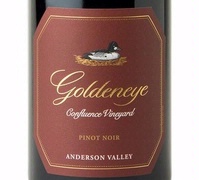 Though Goldeneye’s Pinot Noir from the Confluence Vineyard conveys more fruity elements than earthy ones, savory nuances appear and add complexity. Supple tannins lend support without intruding and bright acidity keeps it fresh. A touch of heat in the finish compared to their other single vineyard bottlings tempers my enthusiasm. … Read more
Though Goldeneye’s Pinot Noir from the Confluence Vineyard conveys more fruity elements than earthy ones, savory nuances appear and add complexity. Supple tannins lend support without intruding and bright acidity keeps it fresh. A touch of heat in the finish compared to their other single vineyard bottlings tempers my enthusiasm. … Read more
Goldeneye, Anderson Valley (Mendocino, California) Pinot Noir The Narrows Vineyard 2015
($84): 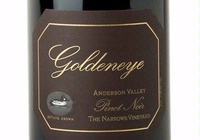 Goldeneye, one of Duckhorn’s many labels, has captured the delicacy and charm of Pinot Noir with this single vineyard bottling. Delicate, red fruit flavors dance on the palate. Beautifully balanced, subtle bitter notes in the finish complement the sense of sweetness from its fruitiness. … Read more
Goldeneye, one of Duckhorn’s many labels, has captured the delicacy and charm of Pinot Noir with this single vineyard bottling. Delicate, red fruit flavors dance on the palate. Beautifully balanced, subtle bitter notes in the finish complement the sense of sweetness from its fruitiness. … Read more
Goldeneye, Anderson Valley (Mendocino, California) Pinot Noir Split Rail Vineyard 2015
($84): 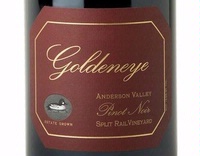 Goldeneye’s single vineyard bottlings actually reflect the difference in sites. Theirs is not a marketing ploy. This one, for example, is denser and more concentrated, conveying more black rather than red fruit, compared to one from The Narrows Vineyard. Yet it still conveys the delicacy that makes Pinot Noir so alluring. … Read more
Goldeneye’s single vineyard bottlings actually reflect the difference in sites. Theirs is not a marketing ploy. This one, for example, is denser and more concentrated, conveying more black rather than red fruit, compared to one from The Narrows Vineyard. Yet it still conveys the delicacy that makes Pinot Noir so alluring. … Read more
Goldeneye, Anderson Valley (Mendocino, California) Pinot Noir Gowan Creek Vineyard 2015
($84): 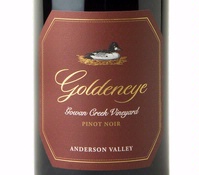 Showing that you can never judge a wine by the numbers, Goldeneye’s Gowan Creek Vineyard bottling weighs in at a hefty 14.9% stated alcohol yet does not finish hot. Nor is it overdone. Indeed, it’s a balanced mixture of black fruit flavors and earthy savory ones. … Read more
Showing that you can never judge a wine by the numbers, Goldeneye’s Gowan Creek Vineyard bottling weighs in at a hefty 14.9% stated alcohol yet does not finish hot. Nor is it overdone. Indeed, it’s a balanced mixture of black fruit flavors and earthy savory ones. … Read more
Rodney Strong, Alexander Valley (Sonoma County, California) Cabernet Sauvignon Reserve 2014
($45): 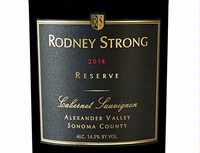 Unlike a Riserva in Italy, Reserve on a label on a California wine has no legal meaning. A winery can, and sometimes does, label their entire production, all several million bottles, as “reserve.” Not so with Rodney Strong. In this case, the winemaker selects the best barrels in the cellar and blends them to create a Reserve bottling. … Read more
Unlike a Riserva in Italy, Reserve on a label on a California wine has no legal meaning. A winery can, and sometimes does, label their entire production, all several million bottles, as “reserve.” Not so with Rodney Strong. In this case, the winemaker selects the best barrels in the cellar and blends them to create a Reserve bottling. … Read more
Domaine Christian Moreau, Chablis Grand Cru (Burgundy, France) Vaudésir 2016
($118, Frederick Wildman And Sons Ltd): 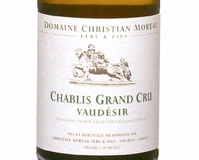 Vaudésir, along with Le Clos, sit atop most critics’ lists — certainly mine — of top Grand Cru vineyards in Chablis. To me, the wines from Vaudésir, in the hands of the best producers, combine power with elegance and epitomize the stature of Grand Cru classification. … Read more
Vaudésir, along with Le Clos, sit atop most critics’ lists — certainly mine — of top Grand Cru vineyards in Chablis. To me, the wines from Vaudésir, in the hands of the best producers, combine power with elegance and epitomize the stature of Grand Cru classification. … Read more
Domaine Christian Moreau, Chablis 1er Cru (Burgundy, France) Vaillon 2016
($48, Frederick Wildman And Sons Ltd): 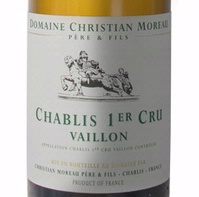 Vaillon is a large well-known 1er cru vineyard on the Left Bank in Chablis that is composed of many plots. Christian Moreau’s plot, where the average age of the vines is 56 years, according to their website, is in the heart of the vineyard. … Read more
Vaillon is a large well-known 1er cru vineyard on the Left Bank in Chablis that is composed of many plots. Christian Moreau’s plot, where the average age of the vines is 56 years, according to their website, is in the heart of the vineyard. … Read more
Domaine Christian Moreau, Chablis 1er Cru (Burgundy, France) Vaillon “Cuvée Guy Moreau” 2016
($75, Frederick Wildman And Sons Ltd): 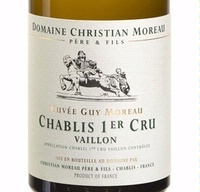 Fabien Moreau, the current winemaker, says that this portion of their plot in the Vaillon vineyard was planted by his grandfather, Guy, 83 years ago and contain the oldest vines of their estate. Located on the steepest part of the slope, the vines have excellent exposure and drainage. … Read more
Fabien Moreau, the current winemaker, says that this portion of their plot in the Vaillon vineyard was planted by his grandfather, Guy, 83 years ago and contain the oldest vines of their estate. Located on the steepest part of the slope, the vines have excellent exposure and drainage. … Read more
Stéphane Aviron, Moulin-à-Vent (Burgundy, France) 2016
($25, Frederick Wildman And Sons Ltd): 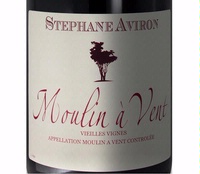 Aviron’s Moulin-à-Vent dazzles with a paradoxical firmness and fleshiness. The tannins are fine, not hard or astringent. You can almost taste the granitic soil of this cru in this tightly wound wine. Uplifting brightness in the finish amplifies its appeal.… Read more
Aviron’s Moulin-à-Vent dazzles with a paradoxical firmness and fleshiness. The tannins are fine, not hard or astringent. You can almost taste the granitic soil of this cru in this tightly wound wine. Uplifting brightness in the finish amplifies its appeal.… Read more
Stéphane Aviron, Morgon (Burgundy, France) Côte de Py 2016
($25, Frederick Wildman And Sons Ltd): 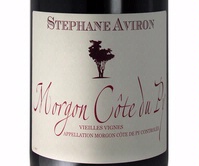 Morgon, along with Moulin-à-Vent, are the two cru that produce the sturdiest wines that often need several years of bottle age to show their true beauty. The Côte de Py is an area within Morgon made of black volcanic soil that imparts an austere mineral-like quality to the wines. … Read more
Morgon, along with Moulin-à-Vent, are the two cru that produce the sturdiest wines that often need several years of bottle age to show their true beauty. The Côte de Py is an area within Morgon made of black volcanic soil that imparts an austere mineral-like quality to the wines. … Read more
Stéphane Aviron, Juliénas (Burgundy, France) 2016
($21, Frederick Wildman And Sons Ltd): 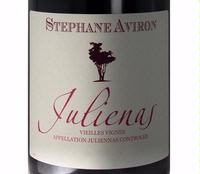 While not as ripe and fleshy as the 2015 wines from Beaujolais, the 2016s are racier while maintaining charm for which the region is known. Aviron’s Juliénas borrows a bit of the density of his Chénas and combines it with an alluring spice. … Read more
While not as ripe and fleshy as the 2015 wines from Beaujolais, the 2016s are racier while maintaining charm for which the region is known. Aviron’s Juliénas borrows a bit of the density of his Chénas and combines it with an alluring spice. … Read more
Stéphane Aviron, Chénas (Burgundy, France) 2016
($22, Frederick Wildman And Sons Ltd): 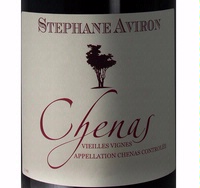 Stéphane Aviron makes wines from many of the crus of Beaujolais, the ten villages that have the potential to produce distinctive wines that stand apart from those labeled Beaujolais or Beaujolais-Villages. (Indeed, wines from these villages rarely put Beaujolais on the label.) … Read more
Stéphane Aviron makes wines from many of the crus of Beaujolais, the ten villages that have the potential to produce distinctive wines that stand apart from those labeled Beaujolais or Beaujolais-Villages. (Indeed, wines from these villages rarely put Beaujolais on the label.) … Read more
Steele, Santa Barbara County (Central Coast, California) Pinot Blanc 2016
($19): 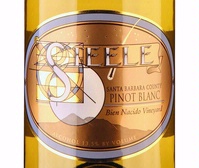 Consumers often avoid Pinot Blanc because they are disappointed by the light weight, often innocuous wine made from that grape. Well, if you’ve been one of those, you’ll want to grab this one to know what real Pinot Blanc tastes like. … Read more
Consumers often avoid Pinot Blanc because they are disappointed by the light weight, often innocuous wine made from that grape. Well, if you’ve been one of those, you’ll want to grab this one to know what real Pinot Blanc tastes like. … Read more
Murrieta’s Well, Livermore Valley (California) “The Whip” 2015
($24): 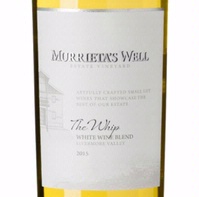 The unusual blend here, roughly 30 percent each of Sauvignon Blanc, Semillon, and Chardonnay, with Viognier and Muscat Canelli contributing the rest, works well. Subtle aromatics are intriguing and lead you into a wine with hints of stone fruits and a glossy texture. … Read more
The unusual blend here, roughly 30 percent each of Sauvignon Blanc, Semillon, and Chardonnay, with Viognier and Muscat Canelli contributing the rest, works well. Subtle aromatics are intriguing and lead you into a wine with hints of stone fruits and a glossy texture. … Read more
Steele, Lake County (North Coast, California) Viognier 2016
($19): 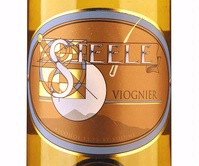 Viognier is a tough grape to turn into wine. It needs adequate ripeness to express its floral character, which often is accompanied by high alcohol from higher sugar levels. Its traditional home is in Condrieu in the Rhône Valley. Jed Steele has mastered it in Lake County. … Read more
Viognier is a tough grape to turn into wine. It needs adequate ripeness to express its floral character, which often is accompanied by high alcohol from higher sugar levels. Its traditional home is in Condrieu in the Rhône Valley. Jed Steele has mastered it in Lake County. … Read more
Cuvaison, Carneros (Napa Valley, California) Chardonnay “Adda” 2015
($50): 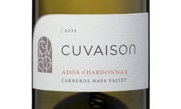
J. Lohr, Arroyo Seco (Monterey, California) Chardonnay “Riverstone” 2016
($14): 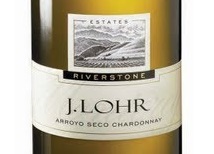 This well-priced Chardonnay is another excellent value from J. Lohr. Overt, but not oily or overdone, it weighs in at a modest 13.5 percent-stated alcohol, which helps explain its balance. Fruity and toasty flavors predominate and make it a crowd-pleasing choice for broiled fish.… Read more
This well-priced Chardonnay is another excellent value from J. Lohr. Overt, but not oily or overdone, it weighs in at a modest 13.5 percent-stated alcohol, which helps explain its balance. Fruity and toasty flavors predominate and make it a crowd-pleasing choice for broiled fish.… Read more
J. Lohr, Arroyo Seco (Monterey County, California) Sauvignon Blanc “Flume Crossing” 2016
($14): 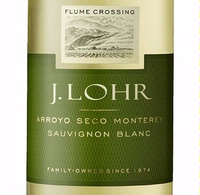 J. Lohr has managed to combine a pleasing pungency tempered by a subtle sweetness in this Sauvignon Blanc. Nicely priced, it could do double duty as a stand-alone aperitif or as an accompaniment to a roast chicken. A fine value.… Read more
J. Lohr has managed to combine a pleasing pungency tempered by a subtle sweetness in this Sauvignon Blanc. Nicely priced, it could do double duty as a stand-alone aperitif or as an accompaniment to a roast chicken. A fine value.… Read more
Spottswoode Estate Vineyard & Winery, Napa Valley (California) Cabernet Sauvignon “Lyndenhurst” 2014
($85): 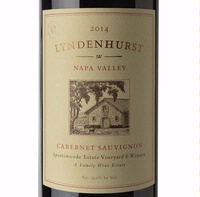 I suppose you could call Spottswoode’s Lyndenhurst their second wine. The grapes used to make it come from their vineyards, presumably those that don’t make the cut for their flagship Spottswoode Cabernet, along with purchased fruit. The incredible quality of this wine shows just how fabulous a producer Spottswoode is. … Read more
I suppose you could call Spottswoode’s Lyndenhurst their second wine. The grapes used to make it come from their vineyards, presumably those that don’t make the cut for their flagship Spottswoode Cabernet, along with purchased fruit. The incredible quality of this wine shows just how fabulous a producer Spottswoode is. … Read more
Dry Creek Vineyard, Dry Creek Valley (Sonoma County, California) Cabernet Sauvignon 2015
($28): 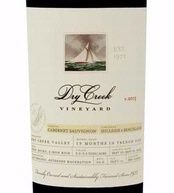 This Cabernet shows the diversity of wines coming from Dry Creek Vineyard. Compared to their 2013 Meritage (also reviewed this week), this Cabernet Sauvignon has more of everything — more alcohol (14.5% stated), more power, more concentration and more fruit dominant flavors. … Read more
This Cabernet shows the diversity of wines coming from Dry Creek Vineyard. Compared to their 2013 Meritage (also reviewed this week), this Cabernet Sauvignon has more of everything — more alcohol (14.5% stated), more power, more concentration and more fruit dominant flavors. … Read more
Dry Creek Vineyard, Dry Creek Valley (Sonoma County, California) Meritage 2013
($30): 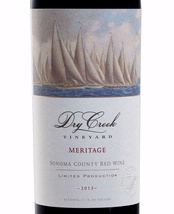 This is classic example of how less is often more. Weighing in at a modest 13.5% stated alcohol, this blend of Bordeaux grapes displays a panoply of black fruit and savory flavors. There’s a hint of cassis-like notes and an olive-like nuance among others. … Read more
This is classic example of how less is often more. Weighing in at a modest 13.5% stated alcohol, this blend of Bordeaux grapes displays a panoply of black fruit and savory flavors. There’s a hint of cassis-like notes and an olive-like nuance among others. … Read more
Kendall-Jackson, California (United States) Zinfandel “Vintner’s Reserve” 2015
($17): 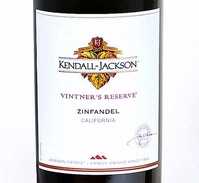 Those looking for “killer” Zinfandel should look elsewhere, which probably explains why I like this wine. It’s a balance of black fruit flavors, spice and a touch of herbal notes wrapped in soft plush tannins. Not flamboyant, it’s a good choice for burgers, barbeque or a pepperoni pizza.… Read more
Those looking for “killer” Zinfandel should look elsewhere, which probably explains why I like this wine. It’s a balance of black fruit flavors, spice and a touch of herbal notes wrapped in soft plush tannins. Not flamboyant, it’s a good choice for burgers, barbeque or a pepperoni pizza.… Read more
Archery Summit, Willamette Valley (Oregon) Pinot Gris “Vireton” 2015
($22): 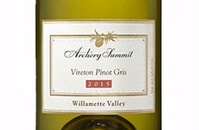 Archery Summit, a top Oregon Pinot Noir producer, also makes distinctive Pinot Gris, judging from this one. It strikes the balance of subtle stone fruit flavors buttressed by vibrant acidity. They have captured the essence of Pinot Gris without falling into the trap of over ripeness. … Read more
Archery Summit, a top Oregon Pinot Noir producer, also makes distinctive Pinot Gris, judging from this one. It strikes the balance of subtle stone fruit flavors buttressed by vibrant acidity. They have captured the essence of Pinot Gris without falling into the trap of over ripeness. … Read more
Folded Hills, Santa Ynez Valley (Central Coast, California) Grenache “Grant” 2015
($34): 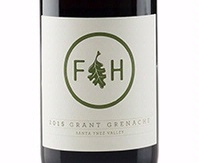 This mid-weight wine is a delight, delivering charming red berry fruit-like flavors intermingled with earthy herbal notes. A blend of Grenache (95%) and Syrah, it positively dances on the palate. Tannins are mild, but provide plenty of structure and the bright acidity keeps it fresh and lively. … Read more
This mid-weight wine is a delight, delivering charming red berry fruit-like flavors intermingled with earthy herbal notes. A blend of Grenache (95%) and Syrah, it positively dances on the palate. Tannins are mild, but provide plenty of structure and the bright acidity keeps it fresh and lively. … Read more
Raventós I Blanc, Vino Espumoso de Calidad (Penedes, Spain) “de Nit” Brut 2015
($23, Skurnik): 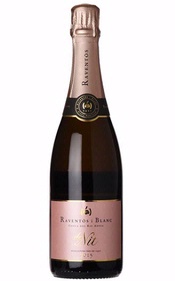 Raventós I Blanc, one of the shining stars of Spanish sparkling wine, left the Cava DO in 2013 and is spearheading a project to create a new one, Conca del Riu Anoia, based on the Anoia River Valley. They felt the regulations governing Cava were weak and wanted stricter ones for producing higher quality sparkling wines. … Read more
Raventós I Blanc, one of the shining stars of Spanish sparkling wine, left the Cava DO in 2013 and is spearheading a project to create a new one, Conca del Riu Anoia, based on the Anoia River Valley. They felt the regulations governing Cava were weak and wanted stricter ones for producing higher quality sparkling wines. … Read more
Raventós I Blanc, Vino Espumoso de Calidad (Penedes, Spain) “Textures de Pedra” 2012
($41, Skurnik): 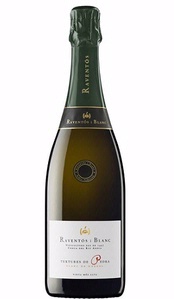 A blend of three red grapes — so technically a Blanc de Noirs — this white wine is an outstanding sparkler and shows that the Champagne region does not hold a monopoly on high-quality bubbly. Creamy and persistent, it demonstrates power and elegance. … Read more
A blend of three red grapes — so technically a Blanc de Noirs — this white wine is an outstanding sparkler and shows that the Champagne region does not hold a monopoly on high-quality bubbly. Creamy and persistent, it demonstrates power and elegance. … Read more
Dog Point, Marlborough (New Zealand) Sauvignon Blanc 2016
($20): 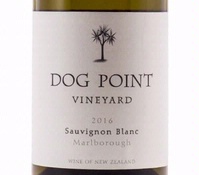 Dog Point consistently produces balanced, easy-to-recommend Sauvignon Blanc. Their 2016 is no exception. They strike a perfect balance between pungency and fruitiness while eschewing the often-found screeching aspect in New Zealand Sauvignon Blanc. This is a Sauvignon Blanc with grace, which makes it perfect for grilled fish.… Read more
Dog Point consistently produces balanced, easy-to-recommend Sauvignon Blanc. Their 2016 is no exception. They strike a perfect balance between pungency and fruitiness while eschewing the often-found screeching aspect in New Zealand Sauvignon Blanc. This is a Sauvignon Blanc with grace, which makes it perfect for grilled fish.… Read more
Domaine de la Grenaudière, Muscadet Sèvre et Maine Sur Lie (Loire Valley, France) 2016
($10, North Berkeley Wine): 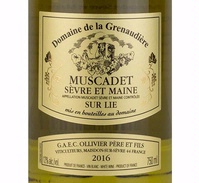 Recommending a wine for summertime consumption with the thermometer in single digits and a foot of snow of the ground may be a new definition of optimism. But the quality/price ratio here makes me want to buy this wine before it disappears.… Read more
Recommending a wine for summertime consumption with the thermometer in single digits and a foot of snow of the ground may be a new definition of optimism. But the quality/price ratio here makes me want to buy this wine before it disappears.… Read more
Maison Joseph Drouhin, Macon-Villages (Burgundy, France) 2016
($14): 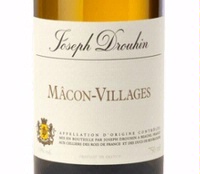 One of Drouhin’s talents is that, along with their top-notch prestigious Burgundies, they make high-quality wines from appellations with lesser pedigrees, such as Macon-Villages. This Chardonnay-based wine, while ripe for Drouhin’s style, still does not approach the opulence seen in many New World Chardonnay. … Read more
One of Drouhin’s talents is that, along with their top-notch prestigious Burgundies, they make high-quality wines from appellations with lesser pedigrees, such as Macon-Villages. This Chardonnay-based wine, while ripe for Drouhin’s style, still does not approach the opulence seen in many New World Chardonnay. … Read more
Paraduxx, Napa Valley (California) Proprietary White Wine 2016
($32): 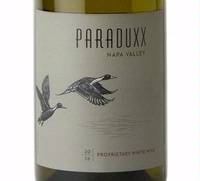 Long known for their non-traditional blends of red grapes, Paraduxx has released a white wine made from a non-traditional blend of white grapes: Rhône varieties, Viognier (65%), Roussanne and Marsanne (7%), with Chardonnay (28%). Floral and fruity, this mid-weight wine would be a pleasing stand-alone aperitif. … Read more
Long known for their non-traditional blends of red grapes, Paraduxx has released a white wine made from a non-traditional blend of white grapes: Rhône varieties, Viognier (65%), Roussanne and Marsanne (7%), with Chardonnay (28%). Floral and fruity, this mid-weight wine would be a pleasing stand-alone aperitif. … Read more
Nickel & Nickel, Yountville (Napa Valley, California) Cabernet Sauvignon State Ranch 2015
($100): 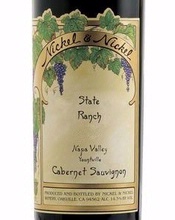 Nickel & Nickel’s State Ranch Cabernet, from a vineyard just down the road from Oakville in Yountville, is similarly ripe and intense as their Sullenger. But it’s rounder and more supple than the its brother from Oakville. A combination of dark black fruit and mineral-like nuances makes for an appealing ying and yang of sweet and savory flavors. … Read more
Nickel & Nickel’s State Ranch Cabernet, from a vineyard just down the road from Oakville in Yountville, is similarly ripe and intense as their Sullenger. But it’s rounder and more supple than the its brother from Oakville. A combination of dark black fruit and mineral-like nuances makes for an appealing ying and yang of sweet and savory flavors. … Read more
Rodney Strong, Sonoma County (California) “Upshot” Red Wine Blend 2015
($28): 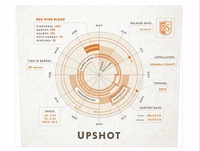 The winery’s press release describes this wine as “a non-traditional blend.” That’s an understatement. With Zinfandel (44%), Merlot (29%), Malbec (15%), Petit Verdot (7%), rounded out with Riesling, it is like no blend I’ve encountered. But that’s one of the things that great about New World wine — people are not afraid to experiment. … Read more
The winery’s press release describes this wine as “a non-traditional blend.” That’s an understatement. With Zinfandel (44%), Merlot (29%), Malbec (15%), Petit Verdot (7%), rounded out with Riesling, it is like no blend I’ve encountered. But that’s one of the things that great about New World wine — people are not afraid to experiment. … Read more
Nickel & Nickel, Oakville (Napa Valley, California) Cabernet Sauvignon John C. Sullenger Vineyard 2015
($100): 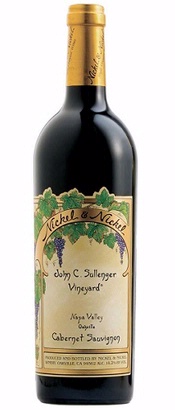 What I love about the Nickel & Nickel Cabernets is how they are all different. Despite the same winemaking team using the same grape variety, the wines offer different flavor profiles, which supports the concept of terroir — that somehow the soil, climate, and exposure in the vineyard determines the character of the wine. … Read more
What I love about the Nickel & Nickel Cabernets is how they are all different. Despite the same winemaking team using the same grape variety, the wines offer different flavor profiles, which supports the concept of terroir — that somehow the soil, climate, and exposure in the vineyard determines the character of the wine. … Read more
Paraduxx, Howell Mountain (Napa Valley, California) Proprietary Red Wine 2014
($80): 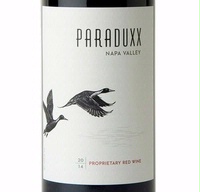 Paraduxx is Duckhorn’s winery and label best known for non-traditional blends of California grapes, such as Zinfandel and Cabernet Sauvignon. With the 2014 vintage, they have introduced some “foreign” grapes into the mix. For this one, they borrow a South Australian concept of blending Cabernet Sauvignon (65%), Syrah. … Read more
Paraduxx is Duckhorn’s winery and label best known for non-traditional blends of California grapes, such as Zinfandel and Cabernet Sauvignon. With the 2014 vintage, they have introduced some “foreign” grapes into the mix. For this one, they borrow a South Australian concept of blending Cabernet Sauvignon (65%), Syrah. … Read more
Diebolt-Vallois, Champagne (France) Blanc de Blancs Prestige NV
($46, Petit Pois): 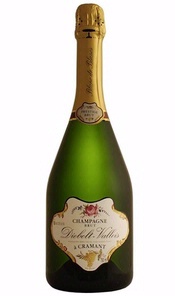 Diebolt-Vallois, a family domaine, is located in Cramant, a village in the heart of the Côte de Blancs, the part of the Champagne region that is best suited for Chardonnay. Indeed, the grapes for this wine come from three villages in the Côte de Blancs that are rated Grand Cru: Cramant, Chouilly and Le Mesnil sur Oger. … Read more
Diebolt-Vallois, a family domaine, is located in Cramant, a village in the heart of the Côte de Blancs, the part of the Champagne region that is best suited for Chardonnay. Indeed, the grapes for this wine come from three villages in the Côte de Blancs that are rated Grand Cru: Cramant, Chouilly and Le Mesnil sur Oger. … Read more
Maison Louis Latour, Viré-Clessé (Burgundy, France) 2014
($20, Louis Latour USA): 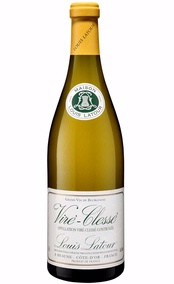 Viré-Clessé is an under-the-radar appellation in the Mâconnais that was created in the late 1990s from combining two villages, Viré and Clessé, that made distinctive wines that were previously included under the umbrella of Mâcon-Villages. It joins St.… Read more
Viré-Clessé is an under-the-radar appellation in the Mâconnais that was created in the late 1990s from combining two villages, Viré and Clessé, that made distinctive wines that were previously included under the umbrella of Mâcon-Villages. It joins St.… Read more
Simonnet-Febvre, Chablis Grand Cru (Burgundy, France) Preuses 2014
($75, Louis Latour USA): 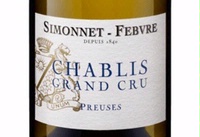 Simonnet-Febvre, a top-notch Chablis producer, makes classically structured Chablis — tightly wound and linear. Their Preuses, from their own vineyards, is always one of their best wines. Preuses has the reputation of being one of the least elegant of the Chablis Grand Cru. … Read more
Simonnet-Febvre, a top-notch Chablis producer, makes classically structured Chablis — tightly wound and linear. Their Preuses, from their own vineyards, is always one of their best wines. Preuses has the reputation of being one of the least elegant of the Chablis Grand Cru. … Read more
Château de Fleurie, Fleurie (Beaujolais, Burgundy, France) 2015
($21, David Bowler Wine): 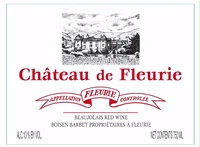 Sensational is the word that comes to mind when describing the 2015 vintage in Beaujolais. Of course, we are talking about the cru of Beaujolais, the ten villages within that region whose wines stand apart from the remainder of the region, which explains why the name of the cru alone — without the word Beaujolais — appears on the label. … Read more
Sensational is the word that comes to mind when describing the 2015 vintage in Beaujolais. Of course, we are talking about the cru of Beaujolais, the ten villages within that region whose wines stand apart from the remainder of the region, which explains why the name of the cru alone — without the word Beaujolais — appears on the label. … Read more
Georges Duboeuf, Fleurie (Beaujolais, Burgundy, France) Domaine des Quatre Vents 2015
($18, Quintessential): 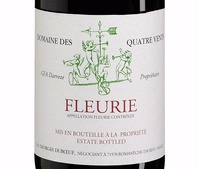 The reputation of Beaujolais is that of an easy-drinking fruity wine to be consumed soon after release. That description may be accurate for most Beaujolais, but not those from ten villages, known as the cru of Beaujolais, whose wines are far more distinctive. … Read more
The reputation of Beaujolais is that of an easy-drinking fruity wine to be consumed soon after release. That description may be accurate for most Beaujolais, but not those from ten villages, known as the cru of Beaujolais, whose wines are far more distinctive. … Read more
Clos du Val, Napa Valley (California) Sauvignon Blanc 2016
($30): Clos du Val’s Sauvignon Blanc focuses on the racy, grapefruit-y character the grape often imparts. Bright and lively, it’s not an “in your face” kind of Sauvignon Blanc. Indeed, its restraint is appealing and shows the more serious side of the varietal.… Read more
Spottswoode, California (United States) Sauvignon Blanc 2016
($36): 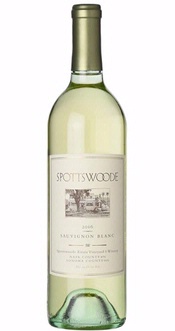 It’s no secret that Spottswoode makes sensational Cabernet Sauvignon. This excellent and stylish Sauvignon Blanc shows they are not a one-horse show. The wine also reminds us to trust the producer rather than relying solely on the AVA (appellation). Since 85 percent of the grapes did not come from one area (Sonoma County 60 percent with the remainder from Napa County), they were obligated to use the broader — and less prestigious — appellation, California. … Read more
It’s no secret that Spottswoode makes sensational Cabernet Sauvignon. This excellent and stylish Sauvignon Blanc shows they are not a one-horse show. The wine also reminds us to trust the producer rather than relying solely on the AVA (appellation). Since 85 percent of the grapes did not come from one area (Sonoma County 60 percent with the remainder from Napa County), they were obligated to use the broader — and less prestigious — appellation, California. … Read more
Far Niente, Oakville (Napa Valley, California) Cabernet Sauvignon 2015
($158): 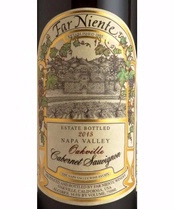 Consumers can count on Far Niente, a leader in Napa Valley Cabernet, to produce a bold, yet refined, Cabernet Sauvignon. The 2015, fruitier than usual while still combining savory and dark earthy flavors, fits that mold. Fine tannins impart a supple texture that allows for immediate enjoyment. … Read more
Consumers can count on Far Niente, a leader in Napa Valley Cabernet, to produce a bold, yet refined, Cabernet Sauvignon. The 2015, fruitier than usual while still combining savory and dark earthy flavors, fits that mold. Fine tannins impart a supple texture that allows for immediate enjoyment. … Read more
Grgich Hills Estate, Napa Valley (California) Cabernet Sauvignon “Miljenko’s Selection” 2013
($90): 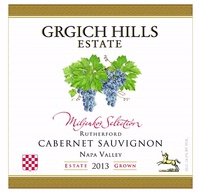 This generous Cabernet Sauvignon is more evidence — not that it was needed — that Grgich Hills is a fabulously talented producer and that Napa Valley is a great place for Cabernet. The 2013 Grgich Hills’ Cabernet is muscular, but more impressively, it has finesse. … Read more
This generous Cabernet Sauvignon is more evidence — not that it was needed — that Grgich Hills is a fabulously talented producer and that Napa Valley is a great place for Cabernet. The 2013 Grgich Hills’ Cabernet is muscular, but more impressively, it has finesse. … Read more
Spottswoode, Napa Valley (California) Cabernet Sauvignon 2014
($185): 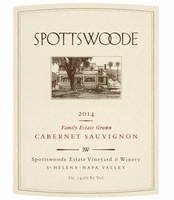 Spottswoode, one of the oldest producers of the “modern” Napa Valley era, was founded in 1972. They started bottling and selling under their own label a decade later. Far ahead of their time, they have been farming organically since 1985 and was certified organic in 1992, according to their website. … Read more
Spottswoode, one of the oldest producers of the “modern” Napa Valley era, was founded in 1972. They started bottling and selling under their own label a decade later. Far ahead of their time, they have been farming organically since 1985 and was certified organic in 1992, according to their website. … Read more
Jordan, Alexander Valley (Sonoma County, California) Cabernet Sauvignon 2013
($55): 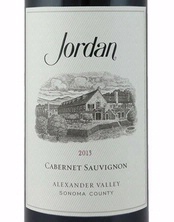 I have always admired the wines from Jordan — and still do. They never succumbed to fad of boisterous “big” California Cabernets. They have held to their original philosophy of making restrained and elegant wines that deliver incredible flavor and finesse. … Read more
I have always admired the wines from Jordan — and still do. They never succumbed to fad of boisterous “big” California Cabernets. They have held to their original philosophy of making restrained and elegant wines that deliver incredible flavor and finesse. … Read more
Luca Bosio Vineyards, Gavi DOCG (Piedmont, Italy) 2016
($19, Quintessential): 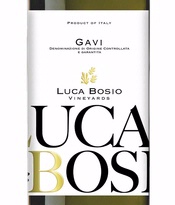 Although Piedmont is best known for its stellar red wines, it is home to excellent whites, such as this one. The Cortese grape, from which Gavi is made, is naturally high in acidity, so the wines need enough body to balance it or they come across and tart and thin. … Read more
Although Piedmont is best known for its stellar red wines, it is home to excellent whites, such as this one. The Cortese grape, from which Gavi is made, is naturally high in acidity, so the wines need enough body to balance it or they come across and tart and thin. … Read more
Villa Huesgen, Mosel (Germany) Riesling “1735” 2016
($20, Quintessential): 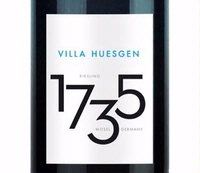 The problem with Riesling is the “S” word — sweet. I can’t remember the times people have told me they’d never order a Riesling because it’s sweet. Well, some are and some aren’t. Sadly, it’s hard to tell just from looking at the label because even some labeled “dry” aren’t. … Read more
The problem with Riesling is the “S” word — sweet. I can’t remember the times people have told me they’d never order a Riesling because it’s sweet. Well, some are and some aren’t. Sadly, it’s hard to tell just from looking at the label because even some labeled “dry” aren’t. … Read more
Gustave Lorentz, Alsace (France) Gewurztraminer 2016
($25, Quintessential): 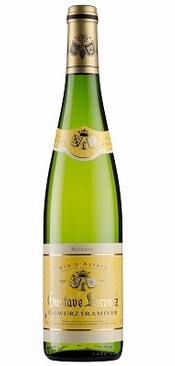 Gewurztraminer is an idiosyncratic wine — people seem either to love or hate it. Complicating its popularity is an undisclosed level of sweetness, not unlike an impediment to enjoying Riesling. Gustave Lorentz, a classic name in Alsace, makes impeccable wines. … Read more
Gewurztraminer is an idiosyncratic wine — people seem either to love or hate it. Complicating its popularity is an undisclosed level of sweetness, not unlike an impediment to enjoying Riesling. Gustave Lorentz, a classic name in Alsace, makes impeccable wines. … Read more
